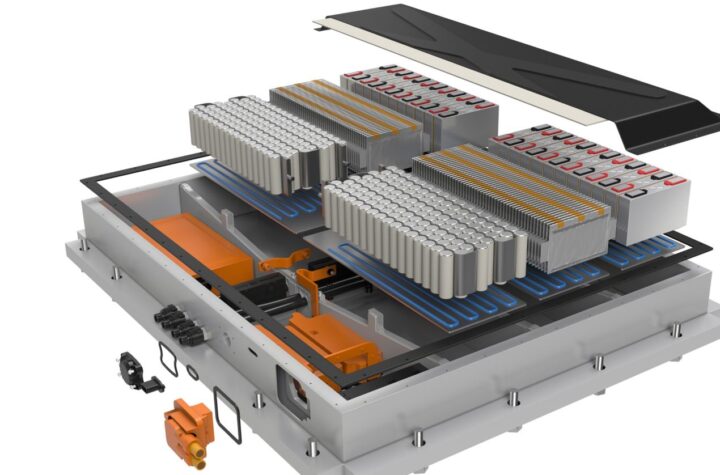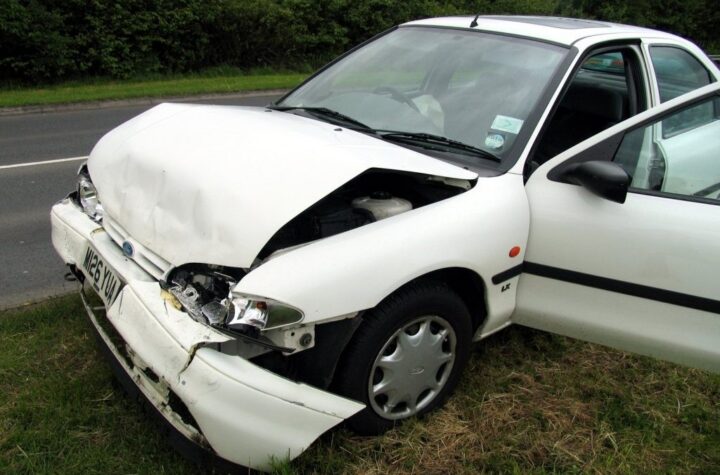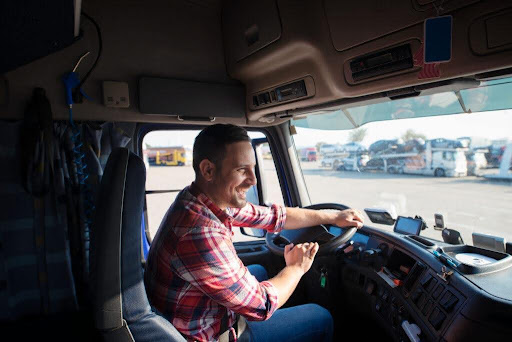
The Telematics Valley, a not-for-profit organization helps its 40-plus member companies realize new opportunities in the Telematics sector. The organization is Sweden-based but the members footprint is European from countries like Germany, Norway and the UK.
Some estimates say that the global telematics market will touch USD 40 billion in four-five years. A recent report by Global Industry Analysts Inc estimates that the global commercial vehicle telematics market will touch USD 11.2 billion by 2015 thanks to increasing emphasis on convenience, safety and efficiency in the transportation industry. Electric vehicle telematics is also set to expand at a rapid rate according to a new report from Pike Research. Pike Research suggests that nearly nine out of 10 plug-in electric vehicles sold this year will include a basic telematics package. And that this will grow to 94 per cent by 2017 with annual revenues from electric vehicle telematics touching USD 1.4 billion by then.
Telematics Valley which was set up in 2001, supports and strengthens the development of business and technology and is a catalyst for the creation of business opportunities. This is achieved by a vast array of targeted objectives such as attracting Swedish and European telematics members to meet; encouraging collaboration; stimulating debate and knowledge; working closely with academia, R&D and test facilities.
Telematics Valley says it seeks to promote the use of telematics to benefit all users in the automotive and transport sector. Bringing together the mix of private and public sector, together with academia, allows for Telematics Valley to provide a forum for the opportunity to share and exchange ideas and information in a workshop format that helps search for solutions to the challenges facing the telematics market.
One of Telematics Valley’s main objectives is to provide a forum for the exchange of content and ideas. The organizations says that its target to be recognized and respected as one of the world leading associations in telematics and contribute building the member’s globally leading position within Telematics. Some of Telematics Valley’s members include, Cybercom Group, EIS by Semcon, Ericsson, Fujitsu, Idevio, Kapsch, Q-Free, Mitsubishi Electric, Movimento, Vehco, PTV, Scania, SMSC, Talkamatic, Volvo Car Corporation, Wireless Car, and Vodafone.
Telematics Valley also offers support for members looking for business in Asia and Australia – these are supported through Shanghai Connected Vehicle and Telematics Alliance (China), KOTBA (South Korea), AIG (The Australian Industry Group).
Telematics Valley’s location in west Sweden is ideal for Telematics companies since for almost three decades, Gothenburg has been in the forefront in developing and exploiting the opportunities for mobile data communications. One of the earliest actors in the world to examine such possibilities was Televerket who back in 1980 diversified into mobile data through Mobitex, a public packet switched mobile data communication system launched in 1986. Volvo Transportation System constructed a digital taxi communication system (Taxi80) launched in 1982.
A number of public Telematics projects have also been carried out in Gothenburg. Prometheus was an EU research program launched in 1986 by the European automobile industry with 14 of the larger car companies in Europe joining together with approximately 40 research institutions and public authorities. The objective was to work together to promote safer and more efficient traffic flows by developing an information system that could be built into cars.
To accomplish the field studies and to conduct experiments, Test Site West Sweden was set up in Gothenburg in 1992 and managed by the Swedish National Road Administration. The purpose of the project (later renamed ARENA) was to make traffic work better through new technology on driveways, also to investigate how traffic could be enhanced through information technology by doing field tests.
The field tests were carried out in close cooperation with the industry sector and they contributed to several new Telematics firms and increased close cooperation between the public and private sectors. This has resulted in a large amount of companies and people with Telematics experience.
In recent years, a significant number of companies focused on wireless communications and the mobile Internet have sprung up in Sweden. Ericsson plays a significant role in this by offering a broad base for start-ups, being a potential customer and providing a recruitment base for new staff. In West Sweden, SAAB and Volvo have played a similar role for the numerous wireless start-ups focusing on the vehicle industry. It is estimated that there are well over 100 companies working within the Telematics sector in Sweden with a majority of those operating in West Sweden.
Automotive Industries spoke to Jan Unander, Executive Director, Telematics Valley.
AI: What are the most important challenges for the automotive industry when trying to capitalize on Telematics?
JU: The automotive manufacturers have to find their role in the telematics market. They have to focus on their core business when implementing Telematics solutions that in the western world are all about to getting vehicles out into the market that can help generate the bulk of profits in the after-market business. Of course some manufacturers make some profits on the vehicles but the major part of the profit comes from aftermarket revenues. It is not to making money on infotainment or selling fleet-management systems that will make the difference to the balance sheet. I have since I started in this business in 1999 preached that the business case for telematics in the vehicle industry is internal and the focus should be on using telematics to keep existing customers loyal, attract new buyers and to make profits on maintenance repair and accessories. This applies for cars as well as commercial vehicles of all kinds.
FordSync is a good example of how telematics can be used to differentiate a brand and place more vehicles on the market to create more after market revenues. But of course it has to meet the customer’s expectations on quality and usability otherwise it will hurt the sales and thus the future after market profit.
Over the years the strive for finding the killer applications has blocked the thoughts but I see now that some players really focus on the potential of cost cuttings in reducing electronic faults before launch, reduce warranty cost and also increase profit when managing service contracts.
We can also see some good examples of using telematics to boost the take up rate such as when Volvo cars introduced a function to remotely start the heaters in cars via Android Smartphones or iPhones . The sales doubled. This is a killer application for Volvo On Call in regions that are cold during winter time.
Finally, it all sounds like it is just to dig gold from the telematics goldmine but generally speaking, the automotive manufacturers are huge companies that have invested a lot in process development and business IT-systems. These once good thoughts now conserve an old culture with its routines and decision making processes which are not adapted to create new offers. This does often block the ability to make swift necessary changes to adapt to make use of the full telematics potential. The problem is its only 20% about technology and 80% people, processes and IT-support.
Not to mention the bonus systems and other sales tools that has been implemented. These need to be revised if the vehicle manufacturers want a change in the dealers focus when dealing with customers.
AI: What operative system do you think will dominate the infotainment deliveries in cars?
JU: Most people say that Android is the best solution but as in most cases standardization is a challenge. Telematics Valley held a seminar in 2010 on the theme “Standardization heaven or hell” and invited representatives from MOST, Autosar, Bluetooth and OSGI to present the status of their standardization. The outcome was that there are no standards yet on a level close enough to the application layer where the commercial value is created. Bluetooth has caused many headaches due to its variety of dialects and Android can also be difficult to handle for the automotive industry. It is important to bear in mind that the Smartphone manufacturers do not consider that how to integrate their phones into cars, is their business mission. They want to sell huge volumes of devices to people.
I-Phone is a “safer” bet as it is “standardized” but the risk of excluding the expanding number of Android users is too high. I can’t say which OS that will be dominant in the infotainment systems in the future but history has shown that it is very seldom that one solution conquers the whole market. We will probably see a new Microsoft – Apple battle where Google takes up the Microsoft role and for us as Smartphone users it does not make a difference. In the automotive industry it is different as safety and security are important and brand value decisive.
AI: Do you see any differences between the western world and China in customer demands or the OEMs possibility to deliver appreciated Telematics solutions?
JU: As always there are similarities and differences. Telematics Valley has been active in China the last 4 years and contributed at conferences in Shanghai and Wuhan and also as an advisor in how to run organizations like Telematics Valley.
Please let me use an example I gave at the Telematics@china conference in Shanghai last December to answer your question. I once was appointed to support a Swedish company to close a sale of a platform for computer gaming, to a Chinese company. When visiting the Chinese buyer they showed me their game development team and I saw some westerners also working there. I asked why and the answer was:
“Chinese developers cannot make interesting games for the western market as our Chinese fairy tales are mostly about our Three King’s history and almost all games are built around that story. In the western world you have Dwarfs, Vikings and Knights. If you don’t know the cultural differences from heritage you cannot create what is needed to differentiate a game on a market that is not your home market.”
This also applies for telematics and I would like to pinpoint some aspects.
– Chinese vehicle manufacturers do not control the dealers/workshops in the same extent as in the West and therefore profit from car sales is more important in China. The internal business case is more complicated to harvest.
– Solutions that require organizing people to deliver a service like e-Call cannot be copy pasted as the infrastructure for delivering the service differs significantly both as a whole and between regions.
– Call centers are still possible to use to deliver a service as wages are lower than in West but this situation is changing right now.
– App developers seem to be less hindered by restrictions and consumers less critical when using them. It will lead to that a lot of interesting apps will emanate from China.
– Mobile Network Operators have a more influencing role in China and take on wider responsibilities then its westerner alike.
However, there are some important similarities:
– Low willingness from consumers to pay
– Vehicle manufacturers are reluctant to invest
On top of this, the strategic visions of the local politicians might influence decisions that we consider only to be commercial.
I am impressed by China and a strong believer in that they will catch up on technology and in the ability to offer valuable telematics services to consumers and professional users. However, they have to stop copy what we are bad at and focus on our good products, solutions and services and of course include their heritage and cultural differences when they make adaptions.
AI: What can an organization like Telematics Valley do to support Telematics companies?
JU: Our mission is firstly to support the members of Telematics Valley in making more and better Telematics related business. That we do by creating opportunities for them to meet to discuss the very hot topics in the industry and also to find ways to collaborate and come up with solutions to challenges. Of course building trust in personal relations is an aim with the dialogues.
To make members come close to business we hold exclusive workshops (members only) where maximum 20 persons can participate with one representative from each company to ensure an efficient workshop format. In some instances we invite non members that are vital in a specific issue to be able to present the full picture of a situation or even represent the final customer to specify their requirements on a certain need.
These workshops are mostly held in Sweden but will also during 2012 be offered in connection with some international conferences to enable companies that decided to attend at the main conference, to also get the opportunity to the afternoon before the main conference, also attend to the workshop. The offer will be sent to the Telematics Valley community but will be open also for a limited number of external telematics players.
As an open service to all actors in the telematics industry, not only members, we organize lunch seminars (typically 4 per year) free of charge where we invite companies to come and present an insight on a current telematics related theme.
Also we hold an international conference each year and in 2011 the main theme was “How to make Telematics business with China”. The program covered both cars and commercial vehicles and gave the attendees a very deep insight from the 6 invited Chinese speakers.
Telematics Valley is also active in match making of members and e.g. Chinese potential customers or partners.
It is important to state that Telematics Valley is not a Science park where R&D is carried out. We focus on the telematics business that can be made with today’s products, solutions and services.
AI: Tell us your views on the growing importance of Telematics in electric vehicles and hybrid electric vehicles.
JU: There are many challenges for telematics in the EV world and somewhat less if driving a hybrid. To mention a few:
1. If I as a driver of an EV have to worry all the time if I will make it or not to where I am going and back again, then the information support the EV will give me as a driver is vital. It is not enough to give me status information, I need trustworthy and to me adapted guidance how I can drive my EV in a non-stressful way.
2. Connected to point 1 is that the electrical grid is my “life line” and it has to support my travelling plan or be so distributed so I can always handle the situation even on an ad hoc basis.
We need to be forced by catastrophic situations or a universal political decision that we have to dramatically reduce usage of fossil fuel to come to a situation where number of EVs rapidly will increase. As long as commercial forces are ruling over environmental and we humans are reluctant to compromise on comfort, the market for EVs and EV connected Telematics will be rather marginal.
The public transport sector is more of interest from an EV perspective as it normally has well defined routes and the logistics of charging can be planned and also they have a large environmental impact in the cities.
The EV hybrid is a different story. It satisfies the commercial actors as well as improves the environment and is therefore a compromise that I think will be the growing product. However, it is a very complicated vehicle from many aspects not to mention electronics.
An EV with so much less mechanics and a battery that represents a big portion of the cost is not a good business case in the traditional business model in the vehicle industry. It requires thinking “outside the box” to justify a quick transformation into EVs.
Sometimes I get the question ‘Why can’t consumers see that our new model only takes 0.35 liters per 10 km and is really a car for the environmental friendly customers?’
My belief is that no matter how low consumption of petrol or diesel is, an environmentalist will only consider a car environmentally friendly when it has no fossil fuel consumption at all, i.e. an EV.
AI: What role do you see Western Sweden playing in this segment – i.e. Telematics for EVs and HEVs?
JU: Both Volvo and Saab have been active but now as Saab is really under pressure and we don’t know the outcome yet.
Volvo’s C30 hybrid that is developed in an EU-project looks very promising. The C30 as an EV is also presented and has a reach of 150 km. A Volvo C30 pilot test to find out consumer needs amongst other things will be carried out during a two year period starting later this year. I expect that this also will define the requirements on the telematics.
BAIC from China together with a Japanese manufacturer of batteries has shown interest in acquiring the EV technology from Saab so the outcome there is still to be seen.
In West of Sweden the local utility company, Göteborg Energi has plans to support an expected 30-40,000 EVs through their Smart Grid. Tests are up and running including how to organize payment services.
When a vehicle manufacturer decides to go for EV’s, also the supporting consultancy companies follow this trend and therefore within the region large consultancy companies like CybercomGroup, Epsilon, EIS by Semcon and ÅF Consultants closely follow the development to create solutions.
AI: Tell us about some of the opportunities Telematics Valley has provided its members in gaining international exposure.
JU: As I said before we have a very wide international network and I am surprised by the high awareness of the brand Telematics Valley that we have created within the telematics industry in the world. This is done through a positive attitude to support other organizations in their ambition by speaking or act as moderators or panelists at conferences and seminars as well as inviting their representatives to our events to meet our members.
We are proud to be the first organization signing a MoU with our Chinese corresponding organization – the Shanghai Connected Vehicle and Telematics Alliance that is an organization within the large Shanghai Transportation Electronics Association. This MoU was signed on September 7th at our International Conference in Gothenburg.
The small and medium sized members utilize the brand awareness of Telematics Valley to “open up doors” to initiate a business relation. Large members like the automotive industry and telecom do not need the brand that much but they have a need to position themselves on the market and Telematics Valley often support them to get a speakers slot at important international conferences.
Members of Telematics Valley utilized our invitation to organize match-making with them and Chinese companies during the conference in Shanghai last December.
In May Telematics Valley and InnoVits in UK have a joint seminar at the MIRA plant to discuss relevant Telematics/ ITS issues and also build relations between members and other international attendees .
Finally an organization like Telematics Valley that have as members customers like the automotive industry as well as their suppliers, offers a very business oriented place for discussions and joint efforts to meet challenges. Having the international footprint with members as well as collaboration partners, we are well suited to reach our mission.
Telematics Valley is a NEUTRAL ARENA for telematics actors to develop thoughts and business.












More Stories
DuPont materials science advances next generation of EV batteries at The Battery Show
How a Truck Driver Can Avoid Mistakes That Lead to Truck Accidents
Car Crash Types Explained: From Rear-End to Head-On Collisions